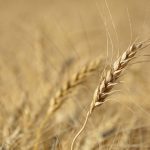Drought in many parts of the country, as well as higher operating costs for ranchers, took a bigger than expected bite out of the U.S. cattle herd in 2021. Both factors will continue to play a key role in the fortunes of the U.S. industry. Herd numbers declined by 1.89 million head in 2021 and analysts fear numbers could decline by even more this year.
It will be another year of extreme drought all across the West. That is after the region’s mega-drought deepened so much last year that it is now the driest in at least 1,200 years and is a worst-case climate change scenario playing out live, according to a new study. A dramatic drying in 2021, about as dry as 2002 and one of the driest years ever recorded for the region, pushed the 22-year drought past the previous record-holder for mega-droughts in the late 1500s and shows no signs of easing soon, says the journal Nature Climate Change.
Drought will be the principal determinant of the general cattle industry scenario in 2022, says Derrell Peel of Oklahoma State University. The current Climate Prediction Center drought outlook suggests that drought may persist in regions of the West and Northern Plains that have been in drought (with some improvement in the Pacific Northwest). It may also persist where drought has recently developed in the Southern Plains and perhaps expand even farther into the Central Plains region, he says. Drought has had an impact on some regions since 2020 and widespread drought in 2022 could result in much more pronounced cow herd liquidation and relocation than previously. The scenario will be all about what producers have to do, he says.
Read Also

Cattle Market Summary
Break-evens, cow and calf prices, plus market summaries courtesy of Canfax and Beef Farmers of Ontario. Cost of Production September…
There will be little flexibility in regions that were in drought in 2020 and 2021, says Peel. For example, December 1 hay stocks in the four-state region of Montana, Wyoming, North and South Dakota were down 40.2 per cent year-over-year. By April or May, this predominantly spring-born calving region could be faced with significant additional liquidation of cows or cow-calf pairs this year on top of the 8.0 per cent herd liquidation in this region since 2020. The region represents 15.1 per cent of the national beef cow herd, he says. The four-state region of Colorado, New Mexico, Arizona and Utah has suffered from drought conditions since 2020 and has seen an 11.6 per cent beef cow herd liquidation in the past two years. Persistent drought will result in additional liquidation this year. This region represents 5.3 per cent of the total beef cow herd, he says.
Drought in Texas and Oklahoma, the Southern and Central Plains regions could have an impact on over 53 per cent of the total beef cow herd or roughly 16 million cows, says Peel. Significant drought in 2022 will have more noticeable impacts on cow markets. It will change the timing of feeder cattle and ultimately feedlot production and will have more implications for the industry in subsequent years, he says.
Feedlot placements have been large this year as drought continues to force cattle into feedlots. The March 1 cattle-on-feed total was record-large for the date. The latest U.S. Drought Monitor map shows that more than 61 per cent of the contiguous U.S. is in some classification of drought. This is the largest percentage of drought classification since 2012, which saw a record of 65 per cent during September. The ongoing drought has increased significantly in recent weeks. In the last two months alone, the percentage of the continental U.S. in drought conditions jumped from 55 per cent to more than 61 per cent. This was an increase of nearly 170,000 square miles. I continue to pray for rain.
















